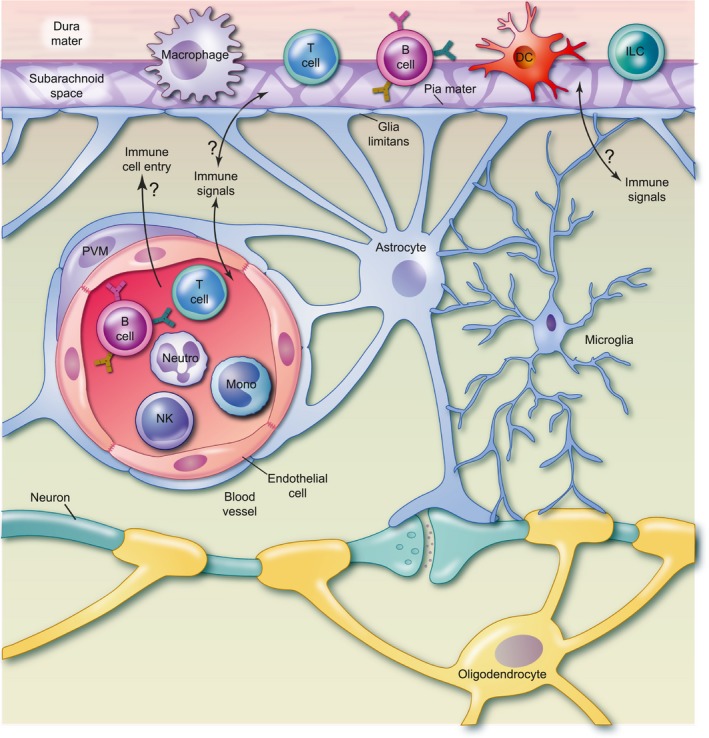Figure 1.

Immune cells of the brain. A diverse complement of immune cells resides in and around the brain. Lymphoid and myeloid lineages including T lymphocytes, B lymphocytes, innate lymphoid cells (ILCs), macrophages and dendritic cells (DCs) are resident to the three meningeal layers surrounding the brain parenchyma. They are found embedded in the dura, a fibrous protective layer, and in the subarachnoid space, where cerebrospinal fluid (CSF) circulates. Immune cells may also contact the pia mater, a delicate meningeal layer immediately adjacent to the brain parenchyma. Their precise localizations within these structures remain incompletely understood and may be dynamic, represented here conceptually by cell type icons that span the meningeal layers. Perivascular macrophages (PVM) surround blood vessels that allow a dynamic population of circulating immune cells to travel through the brain, including myeloid (monocytes, granulocytes) and lymphoid [T, B, natural killer (NK) cells] populations. Microglia are the resident immune cells of the brain parenchyma. They interact directly with neurons, astrocytes and oligodendrocytes. Although physically proximal, these three immune compartments (meninges, circulation and parenchyma) are distinct, and separated by barriers that actively mediate the flow of immune molecules and cells. The circulation is separated from the brain by the blood brain barrier, composed of tight junctions between specialized brain endothelial cells, the endothelial basement membrane, and surrounded by astrocyte foot processes that form the glia limitans, which also creates a barrier from the meninges. Signaling between meningeal, vascular and parenchymal immune cell compartments is tonically active but tightly regulated. It remains poorly understood how immune signals are communicated across central nervous system (CNS) barriers. Furthermore, although largely absent during homeostasis, circulating immune cells can enter the brain parenchyma from the circulation in disease states. Whether they do so in psychiatric diseases, and how this might contribute to their pathogenesis, remains largely to be discovered.
